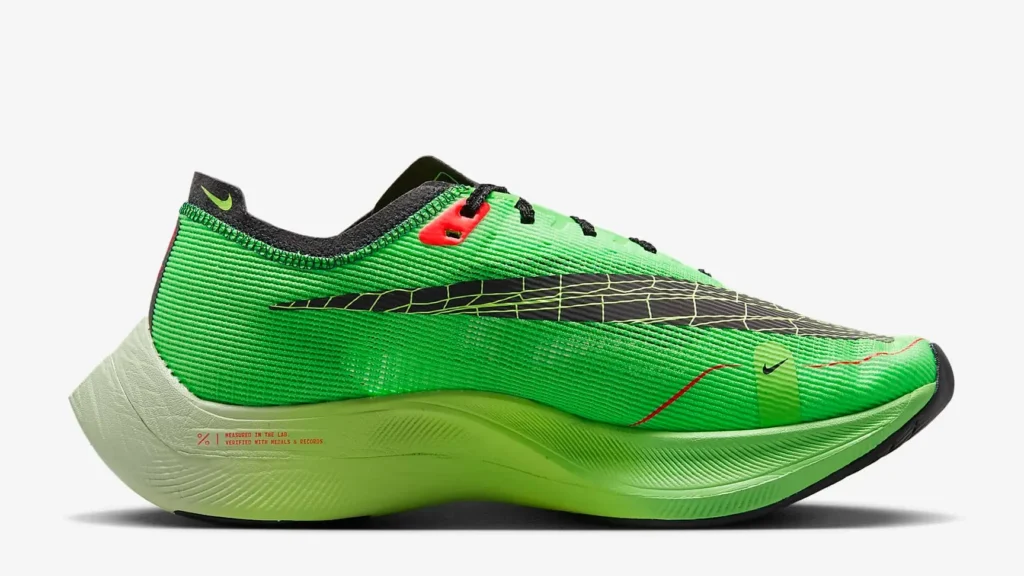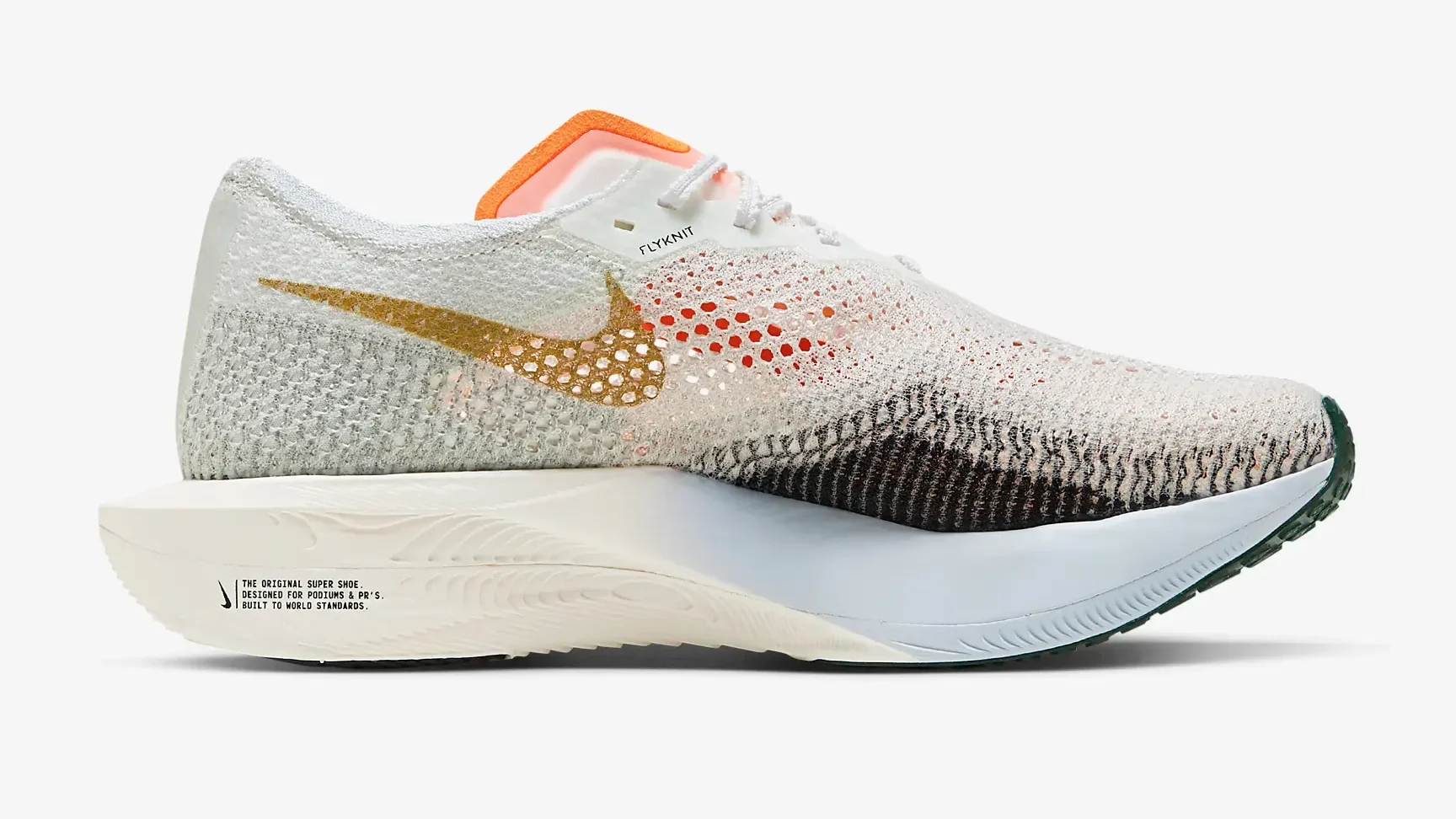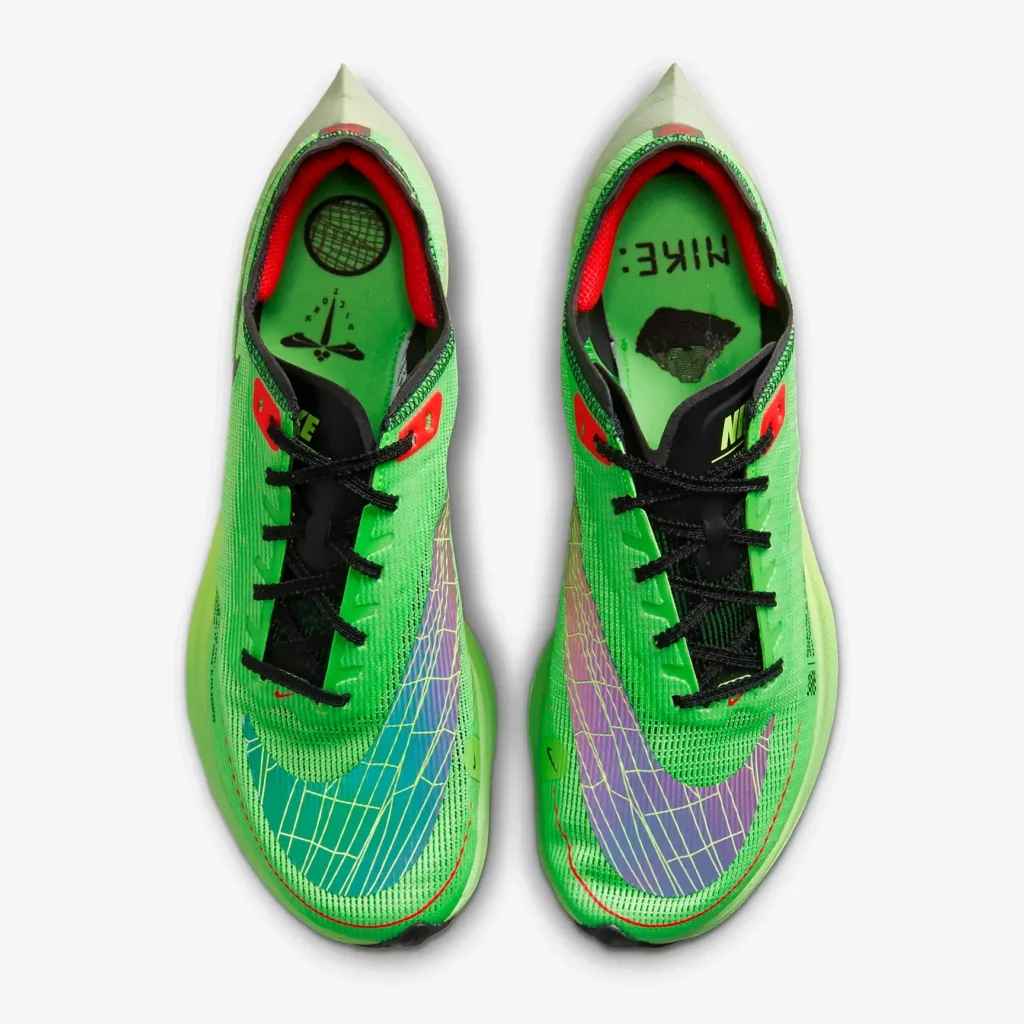Searching for the ultimate racing shoe to elevate your performance? The Nike Vaporfly 2 and Vaporfly 3 are two top contenders promising lightning speed and unparalleled comfort. But which one reigns supreme?
In this head-to-head comparison, we’ll break down the key differences between these cutting-edge models. From cushioning and fit to durability and value, we’ll help you determine the perfect match for your running goals. Get ready to discover which Vaporfly will propel you across the finish line in record time.
Comparison Table Between Nike Vaporfly 2 And Vaporfly 3:
| Feature | Nike Vaporfly 2 | Nike Vaporfly 3 |
|---|---|---|
| Launched In | 2021 | 2023 |
| Stability | Full-length carbon plate | Full-length carbon plate |
| Flexibility | Flexibility grooves on sole | Flexible |
| Sizing | Fits true to size | Wider toe box for roomier fit |
| Weight | Men’s size 9.5: Not specified | Men’s size 10: 200g |
| Cushion | ZoomX foam | Updated ZoomX foam for more energy return |
| Out Sole | Rubber with grooves | Rubber with holes for weight reduction |
| Mid Sole | ZoomX foam | ZoomX foam |
| Upper Sole | Redesigned mesh | Engineered Flyknit yarns |
| Retail Price | $175 | $270 |
Features Comparison:
1) Materials:
The Vaporfly 2 features a redesigned mesh upper constructed with breathable fabrics to keep your feet cool and comfortable. Underfoot, it has a durable rubber outsole with grooved patterns for reliable traction on varied surfaces. Nike’s responsive ZoomX foam makes up the midsole, delivering a bouncy and energetic ride.


The Vaporfly 3 takes it a step further with an engineered Flyknit upper crafted from specialized yarns for superior ventilation. Its outsole boasts a thin perforated rubber construction, reducing weight without sacrificing durability. Additionally, the Vaporfly 3 incorporates an updated ZoomX foam compound for an even more responsive and energetic ride.
2) Durability:
While primarily designed for racing, durability is still a consideration. The Vaporfly 2’s reinforced forefoot and sturdy rubber outsole offer decent longevity. However, the Vaporfly 3 aims to improve durability further with its updated, thinner outsole rubber.
This rubber utilizes less material without sacrificing its lifespan, potentially lasting longer than the Vaporfly 2’s outsole. Ultimately, as racing shoes, neither model is expected to match the durability of dedicated trainers, but the Vaporfly 3 seems to have an edge in this department.
3) Fit:
Achieving the perfect fit is crucial for a racing shoe, and both models approach it differently. The Vaporfly 2 is said to fit true to size, offering a consistent and familiar feel.


On the other hand, the Vaporfly 3 takes a more accommodating approach with a wider toe box, providing a roomier and more relaxed fit in the forefoot area. This could be a game-changer for runners with wider feet or those who prefer extra wiggle room. Nike’s attention to fit ensures both shoes deliver a secure and comfortable ride.
4) Cushioning:
When it comes to cushioning, Nike’s innovative ZoomX foam takes center stage in both shoes. However, the Vaporfly 3 takes it a step further with an updated version of this responsive foam. This new compound promises even better energy return and a bouncier, more lively underfoot feel.
While the Vaporfly 2’s ZoomX foam is no slouch, the Vaporfly 3’s updated cushioning could provide a noticeable advantage, propelling you forward with more explosive strides. Additionally, the Vaporfly 2 features an internal foam pod at the heel for extra cushioning.
5) Stability:
Both the Vaporfly 2 and Vaporfly 3 prioritize stability with their full-length carbon fiber plates. These stiff plates provide a propulsive feel, helping to keep you stable and efficient through your stride.
However, the Vaporfly 3 takes stability a step further with a unique midsole design. The midsole bulges out near the heel, reducing weight on the inside of the foot for an even more stable and balanced ride. This thoughtful construction could give the Vaporfly 3 an edge for runners seeking maximum stability during their races.
6) Value for Money:
When it comes to value, the Vaporfly 2 and Vaporfly 3 present a stark contrast. The Vaporfly 2, priced at $175, offers a more budget-friendly option without sacrificing Nike’s innovative technologies. On the other hand, the Vaporfly 3 comes with a premium price tag of $270, reflecting its updated features and materials.
Runners will have to decide if the Vaporfly 3’s improvements, such as the enhanced energy return foam and improved breathability, justify the higher cost or if the Vaporfly 2 provides sufficient performance at a more accessible price point.
Performance Comparision:
For Walking:
While primarily designed for racing, both the Nike Vaporfly 2 and Vaporfly 3 can be used for walking as well. The responsive ZoomX cushioning and propulsive carbon plates could provide a smooth, efficient stride for casual walks.
However, the lack of substantial outsole lugs or aggressive traction patterns may not offer optimal grip on varied terrain or surfaces. If you plan on doing a significant amount of walking, a dedicated walking shoe with better traction and support might be a wiser choice than these racing-focused models.
For Running:
This is where the Nike Vaporfly 2 and Vaporfly 3 truly shine. The combination of their lightweight builds, responsive ZoomX cushioning, and propulsive carbon plates work together to deliver an energetic and fast ride for road racing. The Vaporfly 3’s updated ZoomX foam promises even better energy return for a snappier, more explosive feel underfoot.
Both shoes are designed to help you chase personal bests, whether you’re tackling a 10K or a marathon. However, the Vaporfly 3 could potentially provide a slight edge in performance for serious runners.
For Standing All Day:
With their racing-focused designs, neither the Nike Vaporfly 2 nor the Vaporfly 3 is ideally suited for prolonged periods of standing. While the ZoomX cushioning provides responsiveness, it may lack the substantial cushioning and support necessary for extended standing.
The lack of features like deep heel cups or substantial midsole cushioning could lead to fatigue and discomfort over time. If you anticipate being on your feet for most of the day, a dedicated shoe designed for standing or walking would be a better choice than these racing models.
For Plantar Fasciitis:
Unfortunately, the Nike Vaporfly 2 and Vaporfly 3 may not be the best options for individuals suffering from plantar fasciitis. While the ZoomX cushioning and carbon plates can provide a smooth, responsive ride, these shoes lack the substantial cushioning and support typically recommended for this condition.
The lack of features like deep heel cups, substantial arch support, or specialized insoles could exacerbate plantar fasciitis pain. For those dealing with this issue, a dedicated shoe designed for plantar fasciitis, with ample cushioning and support, would be a more suitable choice.
Conclusion: Which Is Better For You?
In the battle between the Nike Vaporfly 2 and Vaporfly 3, there is no definitive winner – it ultimately comes down to your specific needs and priorities as a runner. The Vaporfly 2 offers exceptional performance and Nike’s innovative technologies at a more affordable price point.
Meanwhile, the Vaporfly 3 pushes the boundaries even further with updates like enhanced energy return foam, improved breathability, and a more stable ride, but commands a premium cost. If you’re chasing the absolute latest and greatest in racing shoe tech, the Vaporfly 3 could give you an edge.
However, if you’re on a budget or value a tried-and-true design, the Vaporfly 2 remains an excellent choice. Carefully consider your goals, preferences, and budget to determine which Vaporfly will best propel you to new personal bests.

